As stated in the other answer, the correlation coefficient produced by cor.test() in the OP is -0.4429. The Pearson correlation coefficient is a measure of the linear association between two variables. It varies between -1.0 (perfect negative linear association) and 1.0 (perfect positive linear association), the magnitude is absolute value of the coefficient, or its distance from 0 (no association).
The t-test indicates whether the correlation is significantly different from zero, given its magnitude relative to its standard error. In this case, the probability value for the t-test, p < 2.2e-16, indicates that we should reject the null hypothesis that the correlation is zero.
That said, the OP question:
How to decide whether Age is correlated with Losses.in.Thousands?
has two elements: statistical significance and substantive meaning.
From the perspective of statistical significance, the t-test indicates that the correlation is non-zero. Since the standard error of a correlation varies inversely with degrees of freedom, the very large number of degrees of freedom listed in the OP (15,288) means that a much smaller correlation would still result in a statistically significant t-test. This is why one must consider substantive significance in addition to statistical significance.
From a substantive significance perspective, interpretations vary. Hemphill 2003 cites Cohen's (1988) rule of thumb for correlation magnitudes in psychology studies:
- 0.10 - low
- 0.30 - medium
- 0.50 - high
Hemphill goes on to conduct a meta analysis of correlation coefficients in psychology studies that he summarized into the following table.

As we can see from the table, Hemphill's empirical guidelines are much less stringent than Cohen's prior recommendations.
Alternative: coefficient of determination
As an alternative, the coefficient of determination, r^2 can be used as a proportional reduction of error measure. In this case, r^2 = 0.1962, and we can interpret it as "If we know one's age, we can reduce our error in predicting losses in thousands by approximately 20%."
Reference: Burt Gerstman's Statistics Primer, San Jose State University.
Conclusion: Interpretation varies by domain
Given the problem domain, if the literature accepts a correlation magnitude of 0.45 as "large," then treat it as large, as is the case in many of the social sciences. In other domains, however, a much higher magnitude is required for a correlation to be considered "large."
Sometimes, even a "small" correlation is substantively meaningful as Hemphill 2003 notes in his conclusion.
For example, even though the correlation between aspirin taking and preventing a heart attack is only r=0.03 in magnitude, (see Rosenthal 1991, p. 136) -- small by most statistical standards -- this value may be socially important and nonetheless influence social policy.
